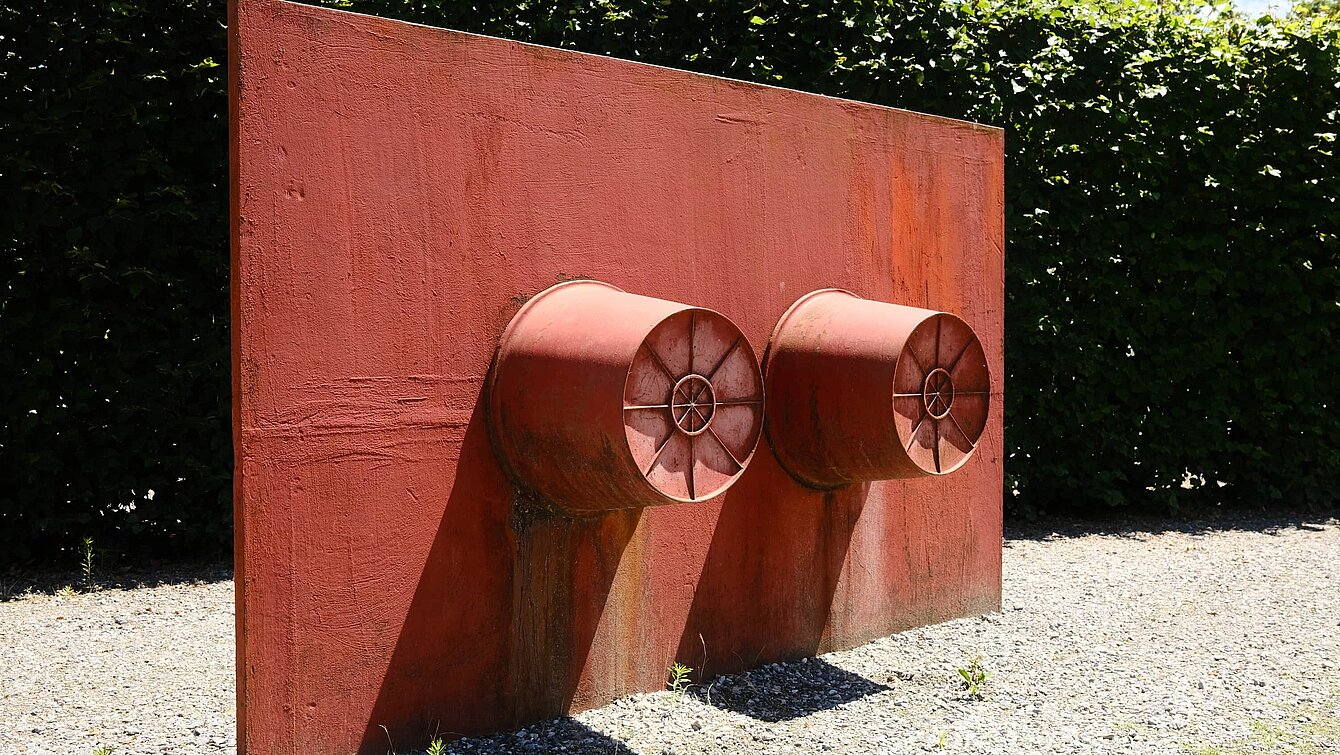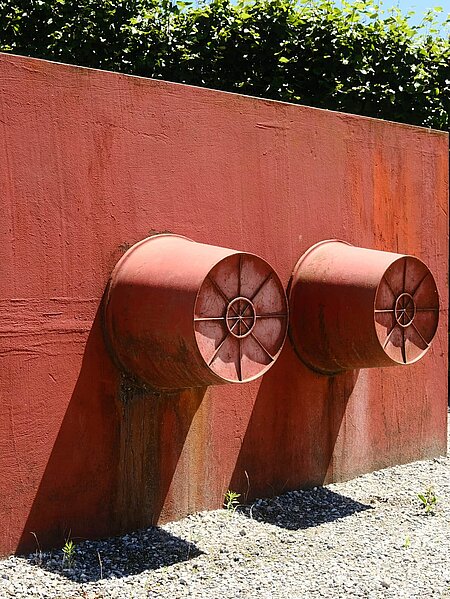Two metal buckets, fixed with their hollow side onto a painted red metal panel, make up the basic elements of this sculpture. These are usable everyday objects, but—removed from their original context—they have been made unusable. Normally buckets would stand on the floor, whereas in this sculpture they appear to be have been freed from the force of gravity and transferred into a state of suspension. The floor becomes a wall, the object becomes a sculpture.
Bunker
Erwin Wurm, 1987


Image Credits
Author
Christa Steinle
Location on map
Owner
Universalmuseum Joanneum
Artist biography
Erwin Wurm
Show all
About the sculpture
From the beginning of the 1980s, Erwin Wurm developed a multi-faceted sculptural register, which led, for the purpose of exploration into the bases of sculpture, from the primarily formal considerations of three-dimensionality, via anthropomorphic sculptures of painted wood and metal, and from the 1990s onwards via the conceptual questioning in terms of absence and presence, volume, weight, gravity and static, to dust and pullover sculptures, and which finally flowed into the use of the semiotic media of photography and video as the active form. People are registered into the intent of photography by everyday objects, be it at the order of the artist or to satisfy their own desire. They mutate because they are subjected to a temporal structure: the “One-minute sculptures”.
Erwin Wurm’s outdoor sculpture entitled “Bunker” appears to be an abstract wall sculpture: two metal dustbins – fixed to a red metal panel at the concave side – are the fundamental elements of it. The dialectic lines of tradition of the object concept of the 20th century avant-garde, from Duchamp’s Readymades to the Surrealists’ objets trouvés, can be traced from this work.
Both dustbins are basically useable consumer items which have however been taken from their original context and rendered un-useable, whilst transforming themselves as abstract, geometrical elements from being objects, into being a sculpture.
Wurm also undermines our perspective on the world of objects by mixing the gravity-bound condition of an object with abeyance. Dustbins are normally found on the ground. Wurm, however, modifies the form of presentation by opening up the ground panel (with which he has replaced the original bases) in both dustbins, thereby replacing the perspective of a ground sculpture with that of a wall sculpture.


















